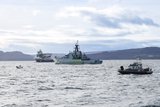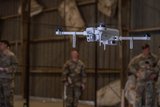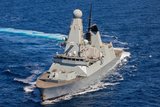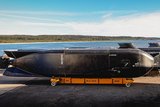Virginia-class submarine USS Idaho launched
The Idaho launched as part of a long line of Virginia-class submarines. (Photo: US Navy)
The 26th Virginia-class fast-attack submarine, which will be known as the USS Idaho when it enters service, has been launched.
The Idaho (SSN-799), built by General Dynamics Electric Boat at its Connecticut shipyard, will be the eighth Block IV Virginia-class submarine. It will remain pierside for final outfitting ahead of its delivery to the US Navy later in 2024.
Begun in 2017, construction of the Idaho was delayed by the Covid-19 pandemic, pushing timescales for the subsequent boats in Block IV.
Related Articles
HII authenticates keel for Virginia-class submarine
Latest Virginia-class SSN commissioned by US Navy despite increasing pressure on submarine service
All Block IV Virginias will have one less major maintenance availability than the Block III variant. Block V versions are due to appear as soon as 2025 with additional missile tubes when compared to the Block IVs.
The Block IV Virginias will serve both the US Navy and the Royal Australian Navy under the AUKUS agreement. Twenty boats have planned within Blocks IV and V (10 in each block) with up to 51 Virginia-class submarines in total planned.
Two combined contracts for the Block IV and V submarines have been valued at US$42.2 billion, with the whole of the currently commissioned Virginia fleet scheduled to be in active service by 2030. They will replace the Navy’s Los Angeles-class submarines as each of them reaches the point of their retirement from service.
The Block IV and V Virginia-class submarines will operate in both littoral and coastal waters.
The Block V Virginia class began construction in 2019 on a $22.2 billion fixed-price incentive multi-year procurement contract for the fiscal years 2019 to 2023, giving an estimated unit cost of $2.5 billion each for the Block V submarines. The first Block V Virginia-class submarine is due to launch in 2025.
Related Programmes in Defence Insight
More from Naval Warfare
-
![How the use of artificial intelligence will affect the US Coast Guard’s acquisitions]()
How the use of artificial intelligence will affect the US Coast Guard’s acquisitions
The USCG is pursuing AI tools to improve the way the service conducts its procurement and fielding processes.
-
![US Coast Guard prepares procurement of next-gen surface search radar]()
US Coast Guard prepares procurement of next-gen surface search radar
The NXSSR will replace five in-service capabilities and be the US Coast Guard’s primary collision avoidance system.
-
![MBDA-led DragonFire’s latest trials move the LDEW system closer to UK Navy integration]()
MBDA-led DragonFire’s latest trials move the LDEW system closer to UK Navy integration
The DragonFire lines up with other European laser-directed energy weapons being developed in collaboration with MBDA.
-
![US Coast Guard pursues solutions to increase maritime domain dominance]()
US Coast Guard pursues solutions to increase maritime domain dominance
The USCG is seeking technologies, services and applications to better connect its assets and speed up the decision-making process.
-
![Canadian Coast Guard’s OOSV delivery is “major milestone” in fleet modernisation]()
Canadian Coast Guard’s OOSV delivery is “major milestone” in fleet modernisation
The Polar Class 6 platform is the largest CCG science-dedicated vessel and will operate on the country’s east coast.
-
![How the Anduril-HHI autonomous ship plan fits in with the US Navy’s MASC programme]()
How the Anduril-HHI autonomous ship plan fits in with the US Navy’s MASC programme
The new modular vessel is expected to be developed for both commercial and defence use, with a heavy focus on production speed and mission flexibility.























